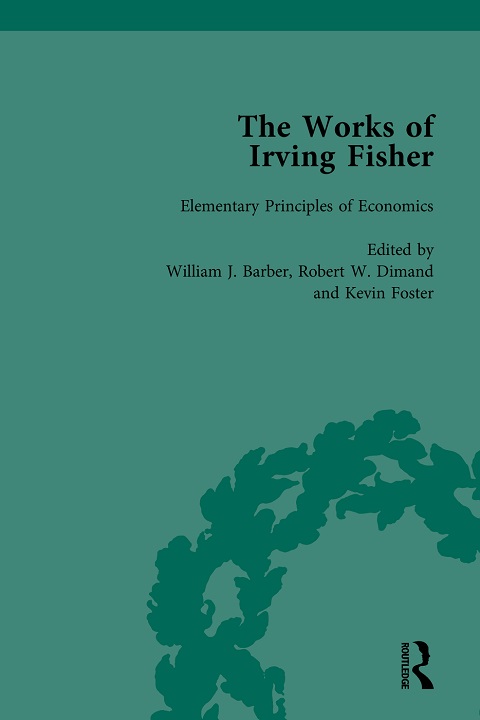
- Published: 1997
- DOI: 10.4324/9781851962259
- Set ISBN: 9781851962259
Set Contents
- General Introduction to the Edition
- Volume 1. The Early Professional Works
- Volume 2. The Nature of Capital and Income
- Volume 3. The Rate of Interest
- Volume 4. The Purchasing Power of Money
- Volume 5. Elementary Principles of Economics
- Volume 6. Stabilizing the Dollar
- Volume 7. The Making of Index Numbers
- Volume 8. The Money Illusion and Related Writings
- Volume 9. The Theory of Interest
- Volume 10. Booms and Depressions and Related Writings
- Volume 11. 100% Money
- Volume 12. Contributions to the Theory and Practice of Public Finance
- Volume 13. A Crusader for Social Causes
- Volume 14. Correspondence and Other Commentary on Economic Policy, 1930–1947
Volume Contents
-
Front Matter
-
Editorial Introduction with Selected Documents
-
“The Best Form of Index Number”, March 1921 By Irving Fisher
-
The Making of Index Numbers: A Study of Their Varieties, Tests, and Reliability
By Irving Fisher
-
Prelims
-
IIntroduction
-
IISix Types of Index Numbers Compared
-
IIIFour Methods of Weighting
-
IVTwo Great Reversal Tests
-
VErratic, Biased, and Freakish Index Numbers
-
VIThe Two Reversal Tests as Finders of Formulæ
-
VIIRectifying Formulæ By “Crossing” Them
-
VIIIRectifying Formulæ by Crossing their Weights
-
IXThe Enlarged Series of Formulæ
-
XWhat Simple Index Number is Best?
-
XIWhat is the Best Index Number?
-
XIIComparing All the Index Numbers with the “Ideal” (Formula 353)
-
XIIIThe So-called Circular Test
-
XIVBlending the Apparently Inconsistent Results
-
XVSpeed of Calculation
-
XVIOther Practical Considerations
-
XVIISummary And Outlook
-
Appendices
-
Appendix I: Notes to Text
-
Appendix II: The Influence Of Weighting
-
Appendix III: An Index Number an Average of Ratios Rather than a Ratio of Averages
-
Appendix IV: Landmarks in the History of Index Numbers 1
-
Appendix V: List of Formulæ for Index Numbers (For Reference)
-
Appendix VI: Numerical Data and Examples
-
Appendix VII: Table 65. Index Numbers by 134 Formulæ for Prices by the Fixed Base System and (in Noteworthy Cases) the Chain System (1913 = 100)
-
Appendix VIII: Selected Bibliography
-
Appendix IX: Review of Literature Since the First Edition
-
-
Index
-
-
Editorial Postscript with Selected Documents
-
“Professor Young on Index Numbers”, August 1923 By Irving Fisher
-
“Professor Bowley on Index Numbers, June 1923 By Irving Fisher
-
Index Number Construction”, December 1927: Formerly the Quarterly Publication of the American Statistical Association By Irving Fisher